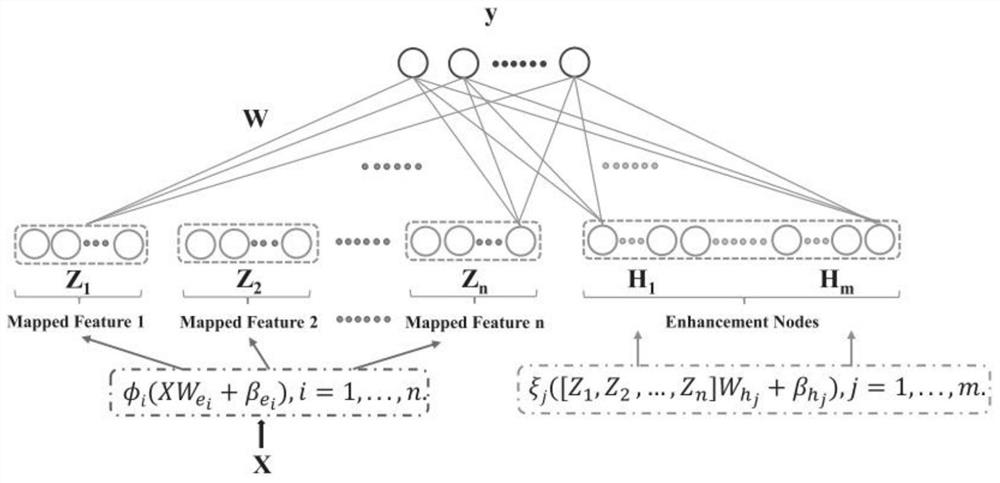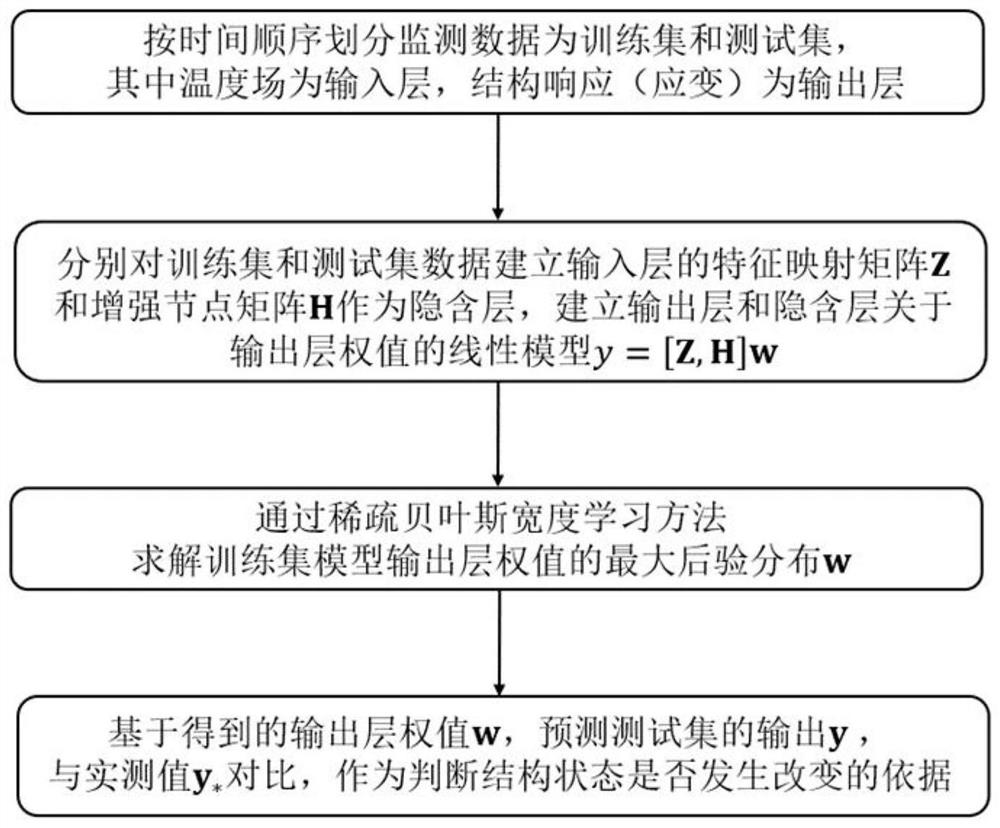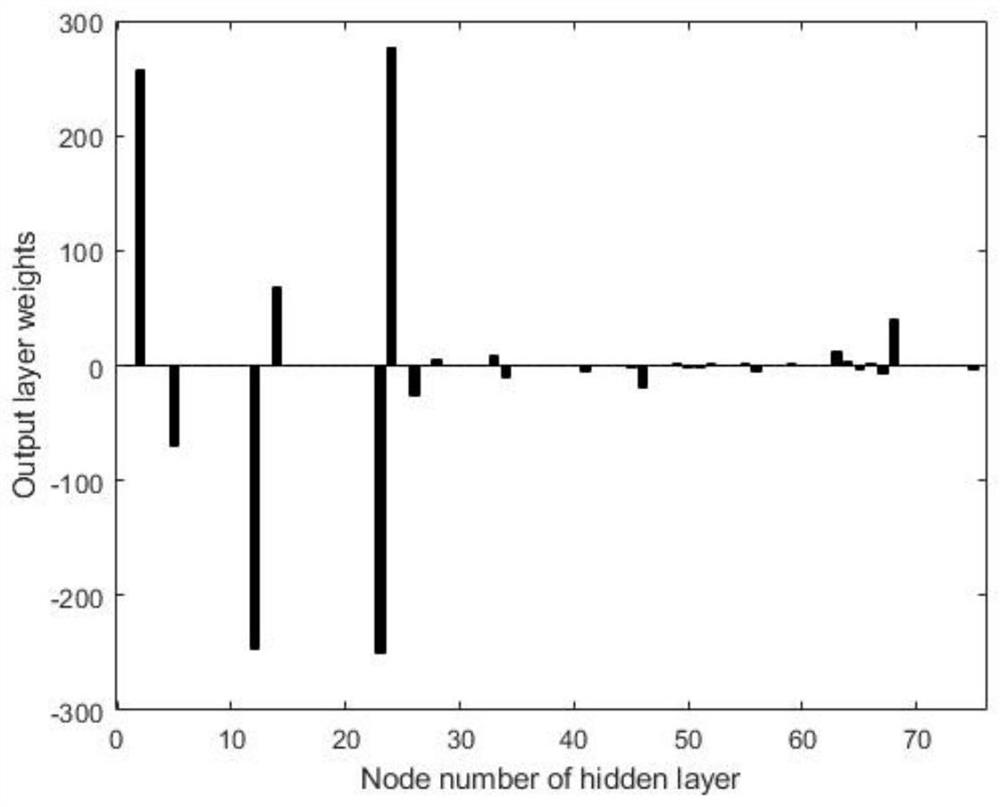High-speed rail track response prediction method based on sparse Bayesian width learning
A technology of sparse Bayesian and learning methods, applied in the field of machine learning and structural health monitoring, to achieve the effects of simple network architecture, reduced workload of manual parameter adjustment, and relaxed equipment hardware requirements
- Summary
- Abstract
- Description
- Claims
- Application Information
AI Technical Summary
Problems solved by technology
Method used
Image
Examples
Embodiment
[0082] The present embodiment is to apply the present invention to a high iron rail structure health monitoring problem. The track structure monitoring system includes six temperature sensors, each measures atmospheric and track structure temperatures, 30 structural strain sensors, and the strain occurs at different positions of the track panel. Application analysis was performed using the monitoring data collected within three years of the monitoring system. The previous two years of data training temperature-strain regression model is used, and the prediction of the subsequent data for strain is used as a basis for judging the status of the track structure.
[0083] The steps are specifically: in the temperature field, the data is input, and the data of 30 strain measuring points is output, and the data of the previous two years is the training set, and the data for the next year is a test set.
[0084] The step two specifically: for each measuring point of the structural respon...
PUM
 Login to View More
Login to View More Abstract
Description
Claims
Application Information
 Login to View More
Login to View More - R&D
- Intellectual Property
- Life Sciences
- Materials
- Tech Scout
- Unparalleled Data Quality
- Higher Quality Content
- 60% Fewer Hallucinations
Browse by: Latest US Patents, China's latest patents, Technical Efficacy Thesaurus, Application Domain, Technology Topic, Popular Technical Reports.
© 2025 PatSnap. All rights reserved.Legal|Privacy policy|Modern Slavery Act Transparency Statement|Sitemap|About US| Contact US: help@patsnap.com



